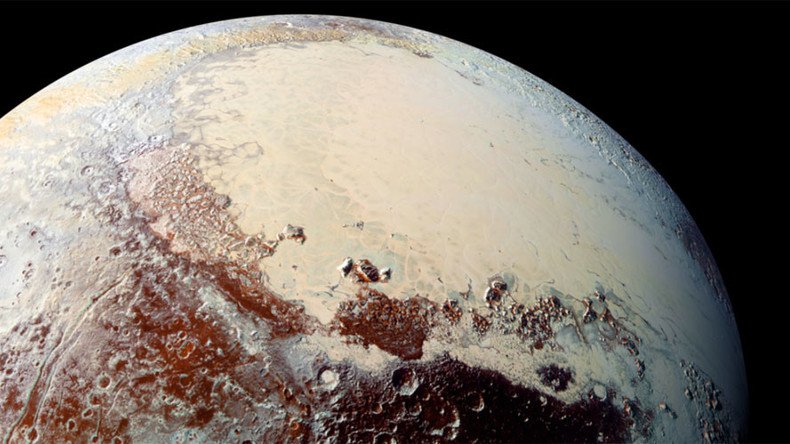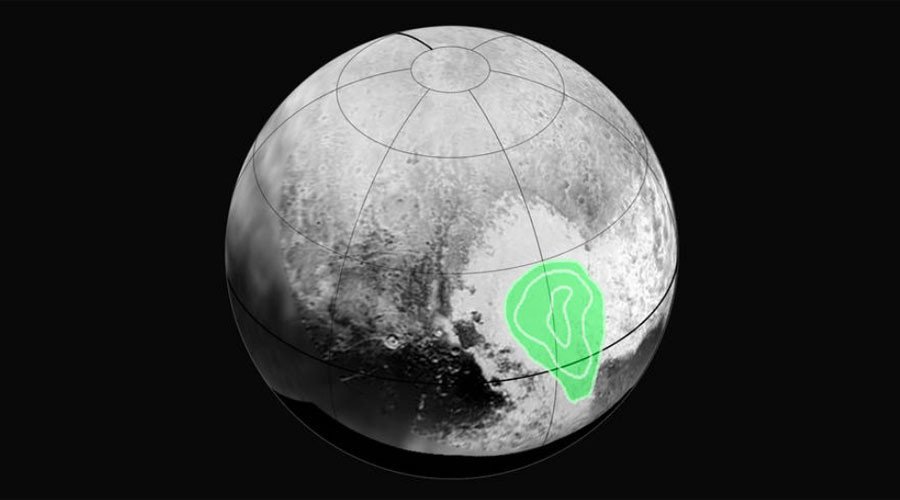Pull on Pluto’s ‘icy heart’ shifted dwarf planet’s axis – studies

Contents of a large crater on Pluto could be the reason for a “gravitational anomaly” which sees a heart shaped region on the dwarf planet line up almost exactly opposite its largest moon, scientists believe.
The icy dwarf planet’s enchanting heart-shaped Sputnik Planitia plain, a suspected impact zone, has fascinated astronomers and scientists for decades.
Two separate studies using data from the NASA New Horizons exploratory mission and published in the journal Nature suggest that what lies inside the unusual heart-shaped formation has been caught in a gravitational pull, shifting Pluto’s axis.
According to NASA, the same surfaces of Pluto and its moon Charon face each other in a phenomenon described as “mutual tidal locking”.
Research led by professor Francis Nimmo of the University of California Santa Cruz and scientists from Massachusetts Institute of Technology (MIT), claims that a thick subsurface ocean must exist deep in Sputnik Planitia for this orientation to be anything other than an unlikely coincidence.
“The New Horizons data say it’s not only opposite Charon, but it’s really close to being almost exactly opposite,” said MIT professor Richard Binzel. “So we asked, what’s the chance of that randomly happening?”
READ MORE: Pluto’s ever-changing ‘heart’ caused by ‘lava-lamp’ churning (PHOTOS)
It turns out the chances are less than 5 percent, with Nimmo’s team reporting that a “thick, heavy” ice ocean is behind the cosmic dance between Pluto and Charon.
Scientists reveal what Pluto’s mysterious ‘heart’ is made of https://t.co/Avr4rxD60kpic.twitter.com/bl1gjo14fK
— RT (@RT_com) June 3, 2016
“It’s not a liquid, flowing ocean, but maybe slushy. And we found this explanation was the only way to put the puzzle together that seems to make any sense,” Binzel told MIT News.
A second study involving University of Arizona professor James T Keane argues that the mass of the ancient, volatile nitrogen, methane, and carbon dioxide ice crater caused a tilt in Pluto’s axis.
This research states how the plain most likely formed northwest of its current location and with Pluto undergoing planetary reorientation, a phenomenon that has also been observed on Mars, the moon and Saturn’s Enceladus satellite.
“Loading of volatile ices within a basin the size of Sputnik Planitia can substantially alter Pluto’s inertia tensor, resulting in a reorientation of the dwarf planet of around 60 degrees with respect to the rotational and tidal axes,” the Keane led study explained.













